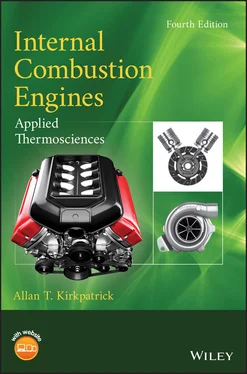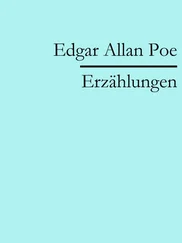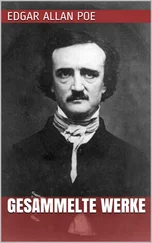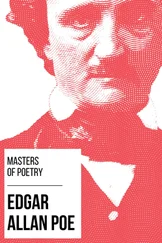1 ...6 7 8 10 11 12 ...40 
Figure 1.3Marine engine. (Courtesy Man B&W Diesel.)
Since 1970, with the recognition of the importance of environmental issues such as the impact of air quality on health, there has also been a great deal of work devoted to reducing the various emissions from engines. The emission levels of current internal combustion engines have decreased to about 5% of the emission levels 40 years ago. Currently, meeting emission requirements is one of the major factors in the design and operation of internal combustion engines. The major emissions from internal combustion engines include nitrogen oxides (  ), carbon monoxide (CO), hydrocarbons (HC), particulates (PM), and aldehydes. These combustion products are a significant source of air pollution, as the internal combustion engine is currently the source of about half of the
), carbon monoxide (CO), hydrocarbons (HC), particulates (PM), and aldehydes. These combustion products are a significant source of air pollution, as the internal combustion engine is currently the source of about half of the  , CO, and HC pollutants in the environment.
, CO, and HC pollutants in the environment.
The emissions of carbon dioxide (CO 2), a primary combustion product of hydrocarbon‐fueled internal combustion engines are now regulated, as CO 2is the dominant contributor to climate change. There is increasing interest in carbon‐free fuels for internal combustion engines, namely hydrogen and ammonia.
1.2 Historical Background
In this section we briefly discuss a few of the major figures in the invention and development of the internal combustion engine. The ingenuity and creativity demonstrated by these early engineers in producing these successful inventions is truly inspiring to today's engine designers. In 1858, J. Lenior (1822–1900), a Belgian engineer, developed a two‐stroke engine that developed 6 hp with an efficiency of about 5%. During the intake stroke, a gas–air mixture at atmospheric pressure was drawn into the engine and ignited by a spark, causing the cylinder pressure to increase during the latter half of the stroke, producing work. The return stroke was used to remove the combustion products through an exhaust valve. The Lenior engine was primarily used in stationary power applications.
In 1872, George Brayton (1830–1892), an American mechanical engineer, patented and commercialized a constant pressure internal combustion engine, Brayton's Ready Engine. The engine used two reciprocating piston‐driven cylinders, a compression cylinder and an expansion cylinder. This cycle was also called the flame cycle , as ignition of the gas–air mixture was by a pilot flame, and the mixture was ignited and burned at constant pressure as it was pumped from the compression cylinder to the expansion cylinder. The Brayton piston engine was used on the first automobile in 1878. The Brayton cycle is the thermodynamic cycle now used by gas turbines, which use rotating fan blades to compress and expand the gas flowing through the turbine.
Nikolaus Otto (1832–1891), a German engineer, developed the Otto Silent Engine, the first practical four‐stroke engine with in‐cylinder compression, in 1876. With a compression ratio of 2.5, the gas engine produced 2 hp at 160 rpm, and had a brake efficiency of 14%. Nikolaus Otto is considered the inventor of the modern internal combustion engine, and the founder of the internal combustion engine industry. The concept of a four‐stroke engine had been conceived and patented by A. de Rochas in 1861, however Otto is recognized as the first person to build and commercialize a working flame ignition engine. Otto had no formal engineering schooling; he was self‐taught. He devoted his entire career to the advancement of the internal combustion engine. In 1872, he founded the first internal combustion engine manufacturing company, N. A. Otto and Cie, and hired Gottlieb Daimler and Wilhelm Maybach, who would go on to start the first automobile company, the Daimler Motor Company, in 1890. Otto's son Gustav founded the automotive company now known as BMW.
The first practical two‐stroke engine was invented and built by Sir Dugald Clerk (1854–1932), a Scottish mechanical engineer, in 1878. Clerk graduated from Yorkshire College in 1876, and patented his two‐stroke engine in 1881. He is well known for his career‐long contributions to improvement of combustion processes in large‐bore two‐stroke engines. Clerk's engine was made of two cylinders – one a working cylinder to produce power and the other a pumping cylinder to compress and transfer the intake air and fuel mixture to the working cylinder. Poppet valves were used for intake flow, and a cylinder port uncovered by the piston on the expansion stroke was used to exhaust the combustion gases.
Many of these early internal combustion engines, such as the Lenior, Brayton, and Otto engines, were powered by coal gas, a mixture of methane, hydrogen, carbon monoxide, and other gases produced by the partial pyrolysis of coal. In the 1880s, crude oil refineries began producing gasoline and kerosene in quantities sufficient to create a market for liquid fueled internal combustion engines.
Gottlieb Daimler (1834–1900), a German engineer, is recognized as one of the founders of the automotive industry. He developed a high‐speed, water‐cooled four‐stroke engine in 1883. The engine had a 70 mm bore and 100 mm stroke, and produced about 1 hp at 650 rpm. The gasoline fuel was vaporized and mixed with the intake air in a carburetor. It then passed by a spring loaded intake valve activated by sub‐atmospheric cylinder pressure into the cylinder. The fuel–air mixture was ignited by a flame tube located just below the intake valve. The exhaust valve was operated by a cam lobe on the flywheel. In 1886, Daimler built the first four‐wheeled automobile, and founded the Daimler Motor Company in 1890.
Karl Benz (1844–1929), a German engineer, successfully developed a 3.5 hp liquid fueled four‐stroke engine with a carburetor and spark ignition in 1885. The ignition system consisted of an electrical induction coil with a rotary breaker driven by the engine and a removable spark plug fitted into the cylinder head, similar to what is found in today's engines. The engine was installed on a custom three wheeled vehicle in 1886, the first ”horseless carriage.” The transmission was a two‐chain arrangement that connected the engine to the rear axle.
In 1897 Rudolph Diesel (1858–1913), a German engineer, developed the first practical four‐stroke engine using direct injection of liquid fuel into the combustion chamber. The high compression ratio of the engine resulted in autoignition and combustion of the fuel–air mixture. Diesel graduated from Munich Polytechnic in 1880, and worked with his former professor, Carl von Linde, initially on ammonia Rankine cycle refrigeration, then worked with the MAN company to develop compression ignition engines. He designed his engines to follow Carnot's thermodynamic principles as closely as possible. Accordingly, his initial objective was to have constant temperature combustion; however, this was not realized in practice, and he adopted the strategy of constant pressure combustion.
Rudolph Diesel's single cylinder engine had a bore of 250 mm, stroke of 400 mm, for a 20‐liter displacement. The diesel fuel was atomized using air injection, a technique where compressed air entrained diesel fuel in the injector and carried it into the cylinder. The engine operated at a speed of of 170 rpm, and produced 18 hp, with a an efficiency of 27% at full load. This is a much greater efficiency than the steam engines and spark‐ignition engines in use at that time.
Читать дальше


 ), carbon monoxide (CO), hydrocarbons (HC), particulates (PM), and aldehydes. These combustion products are a significant source of air pollution, as the internal combustion engine is currently the source of about half of the
), carbon monoxide (CO), hydrocarbons (HC), particulates (PM), and aldehydes. These combustion products are a significant source of air pollution, as the internal combustion engine is currently the source of about half of the  , CO, and HC pollutants in the environment.
, CO, and HC pollutants in the environment.










